- News
- Reviews
- Bikes
- Components
- Bar tape & grips
- Bottom brackets
- Brake & gear cables
- Brake & STI levers
- Brake pads & spares
- Brakes
- Cassettes & freewheels
- Chains
- Chainsets & chainrings
- Derailleurs - front
- Derailleurs - rear
- Forks
- Gear levers & shifters
- Groupsets
- Handlebars & extensions
- Headsets
- Hubs
- Inner tubes
- Pedals
- Quick releases & skewers
- Saddles
- Seatposts
- Stems
- Wheels
- Tyres
- Tubeless valves
- Accessories
- Accessories - misc
- Computer mounts
- Bags
- Bar ends
- Bike bags & cases
- Bottle cages
- Bottles
- Cameras
- Car racks
- Child seats
- Computers
- Glasses
- GPS units
- Helmets
- Lights - front
- Lights - rear
- Lights - sets
- Locks
- Mirrors
- Mudguards
- Racks
- Pumps & CO2 inflators
- Puncture kits
- Reflectives
- Smart watches
- Stands and racks
- Trailers
- Clothing
- Health, fitness and nutrition
- Tools and workshop
- Miscellaneous
- Buyers Guides
- Features
- Forum
- Recommends
- Podcast
£3,750.00
VERDICT:
Covers distances quickly but for me lacks excitement on the road or gravel, and expensive compared with rivals
Weight:
9,500g
Contact:
At road.cc every product is thoroughly tested for as long as it takes to get a proper insight into how well it works. Our reviewers are experienced cyclists that we trust to be objective. While we strive to ensure that opinions expressed are backed up by facts, reviews are by their nature an informed opinion, not a definitive verdict. We don't intentionally try to break anything (except locks) but we do try to look for weak points in any design. The overall score is not just an average of the other scores: it reflects both a product's function and value – with value determined by how a product compares with items of similar spec, quality, and price.
What the road.cc scores meanGood scores are more common than bad, because fortunately good products are more common than bad.
- Exceptional
- Excellent
- Very Good
- Good
- Quite good
- Average
- Not so good
- Poor
- Bad
- Appalling
Designed as a bit of an all-rounder, there is very little the Salsa Warroad can't do – it's capable on the road, on the gravel and everything in between. But is being capable enough, especially when you are looking at this type of money?
- Pros: Great groupset, especially the brakes; neutral handling for long distance riding on the road
- Cons: Firm ride; twitchy handling on the gravel; stodgy on the road at speed
> Find your nearest dealer here
Ride
Over the six-week test period I rode the Warroad a lot on various terrains over differing distances at a wide range of intensities, but I found it worked best when I wasn't really in a hurry.
A case in point was in the final week of the test. The West Country was basking in summer sun and with four days of tough riding in my legs I went out for a bit of a chill-out recovery ride.
Switching between the back lanes and short sections of off-road bridleways for the first few miles, I bimbled along taking in the scenery before joining the canal path which was surprisingly quiet considering the weather. Cruising along at about 12-15mph everything was good with the world, the Warroad flowing through the dips and potholes comfortably and with ease, thanks to the large volume 650B tyres and the well-padded WTB saddle taking care of the larger bumps.
Picking up a cheeky tailwind for the rest of the route home showed how quickly you can cover ground when back on the tarmac. With the double chainset choice on this model giving you ratios more biased towards the road, you aren't likely to find yourself spinning out on any but the steepest of descents.
The handling is pretty good on the road too, especially on this kind of steady ride when you aren't taking things flat out. The steering is very neutral and with the extra rubber on the road from the 47mm tyres there is plenty of confidence-building going on. Swooping through the bends and fast roundabouts, you can just let the Salsa go. After all, if things go wrong you've got those excellent hydraulic Shimano 105 brakes to get everything back under control.
The last part of the journey was an hour stint across Salisbury Plain's wide, flowing gravel byways designed for transporting military vehicles, and this is where the Warroad let itself down a little. There are some decent descents available that go on for quite a while. Most of them are hardpacked but with a covering of loose small aggregate so they take a bit of concentration, but it's still possible to hit speeds of over 40mph if you are brave enough.
The previous day I'd ridden the Cotic Escapade on this very same section and it was brilliant. With virtually identical slick WTB tyres at the same pressure as I was using on the Salsa, the Cotic flew down the gravel track with me not even needing to scrub any speed.
A light grip on the bar, letting the bike float around a little, meant the Escapade flowed over the stones, and while small pockets of deep gravel would see the front end twitch, it was so flickable that the slightest shift in body weight saw it remain under control.
The Salsa's turn wasn't anywhere near so fun. Keeping control of the front wheel was a battle as it skipped atop the smaller stones, but worse was that the feedback from the tyre to let you know what it's up to got lost in translation somewhere. The feeling of vagueness meant you were always trying to play catch up with the handling rather than being able to predict what was about to happen, as you can on something like the Cotic or Canyon's carbon Grail. I had to scrub the speed right off to bring the Warroad under control.
Away from the descents, the Salsa performs well enough off-road although it's not the plushest I've ever ridden, and if I'm perfectly honest the whole bike felt pretty muted when it came to feedback from the frame.
On the plus side, its 9.5kg weight means it's a decent climber, and there is certainly plenty of stiffness around the bottom bracket area and chainstays.
Salsa already has the Warbird as its purely gravel-specific bike, with the Warroad an all-rounder but with more bias towards endurance road riding, which is why I can forgive it its little foibles off-road, but what I can't forgive is the fact that it's not that exciting on it.
As I've described above, the Warroad is great for covering distance at a moderate pace, but I expected more when really dropping the hammer down. I'm not talking race bike levels of acceleration, but with the stiffness of the frame I was hoping for some sort of reward for putting in the effort.
Get out of the saddle to sprint for a hill or to beat the lights and while the speed may increase, you aren't really getting much bang for your buck. It's the same in the saddle too: try to roll the big ring round on a flat section to beat the wind or just because you want to ride hard and it all feels like it is all a bit of a waste of time, with no reward for your effort.
I might be sounding a little harsh on the Warroad, after it is a solid enough bike that can take on many things, but if you are looking for a fun and responsive ride you aren't going to find it here. True, if you are out for a long time – and judging by the amount of luggage fixings on the frame, Salsa is expecting you to be – predictability is a good trait to have, but many other bikes manage to combine the two.
Frame and fork
Like many other brands, Salsa has designed the carbon fibre frame for stiffness in certain areas and comfort in others.
At the front end a tapered head tube increases front end stiffness to deal with the forces from hard steering and heavy braking, and thanks to its larger cross-sectional area it also allows for a bigger junction with the down tube.
To resist pedalling loads, the bottom bracket junction is massive, as are the chainstays where they leave it, before tapering down towards the rear dropouts.
For the seatstays, Salsa has developed the Class 5 Vibration Reduction System giving them a tall, thin, vertically orientated profile which Salsa claims promotes flex before it reaches the seatpost.
Neither seatstays nor chainstays have bridges within them, which also promotes flex.
The press-fit bottom bracket might not be to everybody's taste but fair play to the Warroad, it has seen plenty of dust and rain throughout the test period and it hasn't started to creak.
On a bike like this, tyre size is becoming one of the key criteria and as you can see in the pictures this Warroad comes with 650B wheels, wearing 47mm tyres which is the limit for width – pretty good, I'd say. On its website Salsa says that 47mm includes knobbly versions too.
The Warroad is also compatible with 700C wheels and tyres, up to 35mm in width. Fit mudguards and that drops to 30mm, or 42mm if using 650B.
When it comes to fitting things to the frame and fork, the Warroad offers loads of choice. As I mentioned, it is mudguard compatible with the included fixing kit plus there are mounts for a rear rack, a top tube bag, accessory mounts under the down tube and three bottle cage mounts on frames 56cm and above.
The fork has mounts for a rack plus pack mounts, and there is also internal routing for a dynamo cable.
If you are running the Warroad with a 1x setup (single chainring) and ditching the front mech, you can run a dropper post which, if you haven't come across it before, is a seatpost that can be raised or dropped via a button on the handlebar. They're most often seen on mountain bikes where you can drop the seatpost when descending over technical and rough terrain before reinstating it to your preferred height for on the flat or climbing.
All the gear cables and hydraulic tubes are routed through the frame for a clean look, and Salsa has included internal sleeves to make fitting simpler.
Geometry and sizing
As you'd expect for this kind of bike, the geometry is quite relaxed. The head tube has an angle of 71 degrees which is pretty slack, and Salsa has paired this with a long offset fork which it says creates high mechanical trail, to increase stability on rough surfaces – not something I necessarily felt.
The top tube on our 56cm model is... 56cm, which connects to a 52cm seat tube and 17.2cm head tube at the other end. Stack and reach are 584.46mm and 381.83mm precisely!
There is a good spread of sizes in the range, from 49cm to 61cm in terms of top tube length, and each comes with a five-year warranty for the frame and three years for the fork.
Groupset and finishing kit
The Warroad comes in a few guises, but the model we have here is based around Shimano's R7000 groupset paired with its latest group-specific R7020 hydraulic brakes.
The previous iteration brake and gear levers were never my favourites when it came to performance or shape, but these new models have much better ergonomics and the gear shifting comes very close to that of the higher spec Ultegra/Dura-Ace. The power and modulation at the brake levers is also much improved over the previous versions.
Salsa has specced 160mm rotors front and rear and that is loads of stopping power when the bike is bare, and should still be plenty when the bike is loaded up. There is loads of modulation too, so there is very little chance of locking up the front wheel when braking hard.
Up front you get a 50/34 compact chainset paired to an 11-32 cassette, which gives you a good spread of gears for the road, and unladen should be fine on the gravel too unless the area is very hilly. If you are likely to spend most of your time off-road, though, you'd probably be better off going for one of the 1x options.
You certainly can't fault the shifting from the 105 mechs and levers. It's crisp and precise even under load, and one thing I especially like is that Shimano manages to achieve this definitive gear change with just the lightest of touches.
The bar, stem and seatpost are own-brand Salsa offerings, all manufactured from aluminium alloy. It isn't exactly exciting but it does the job and should stand up to plenty of knocks.
The WTB saddle is its Volt 135 Race model and it has a fair amount of padding for a road bike. I was comfortable on it for a good couple of hours but if I was spending a lot of time on tarmac I'd change to something a little more minimalist and narrower. It works well enough off-road, though.
Wheels and tyres
WTB also provides the wheels and tyres. Speedterra hubs are laced with 28 spokes to the WTB ST i23 TCS rims, and it creates a pretty tough build. I certainly had no issues with them when hitting small rocks and potholes over the test period.
The tyres are WTB Byways and are a good crossover from road to gravel track. At 47mm they are wide enough to resist sinking on all but the smallest stones and roll reasonably well on the road too.
If you do venture onto grass or mud, then pray for it to be dry as they are basically slicks, apart from a slightly knobbled edge to the tread.
Riding on the gravel and with all that skipping around at speed did hammer the central tread pattern quite quickly on the front, leaving smooth patches after just a few trips that made the tyres look as though they'd been skidded on. The more I rode them they didn't get any worse, though, so I'd put it down to a purely cosmetic issue. Durability was actually quite good, and I had no issues with punctures.
Value
There is no way to sugar coat this, the Warroad is an expensive bike when you take everything into consideration. I rode the bike for a good few weeks before I found out that the price was over a grand more than I'd estimated, at £3,750.
A Shimano 105-equipped Rose Backroad will set you back just £2,042. Okay, David wasn't exactly enamoured by the firm ride, but I'd say the comparisons are close to my feelings about the Warroad. The Salsa does have more kit-carrying ability thanks to the fork, but the Rose will still take full mudguards and a rear rack.
> Buyer's Guide: 22 of the best gravel and adventure bikes
Mat really enjoyed the highly versatile Wilier Jena, a similarly styled gravel/adventure bike that has the mounts for front and rear racks plus mudguards. That one comes in at £3,399.99 but you are getting a full Shimano Ultegra groupset, and it's a bit lighter too.
Conclusion
Taking price out of the equation, the Warroad isn't a bad bike. It is great at covering distances at a decent pace, which is one of its main design briefs, but it's very pigeon-holed.
Reading through the blurb and watching the videos on Salsa's website, Salsa also says that it has a performance nature to it on the road, complemented by the Warroad's stiffness. I just didn't get that, and it's the same on the gravel too. The Warroad can cover a lot of different disciplines thanks to its ability to take larger tyres, but it just doesn't deliver a fun and responsive ride.
Include the price and that just compounds the problem, as it just isn't very competitive against many of its rivals.
Verdict
Covers distances quickly but for me lacks excitement on the road or gravel, and expensive compared with rivals
road.cc test report
Make and model: Salsa Warroad
Size tested: 56cm
About the bike
List the components used to build up the bike.
Frame: Warroad Carbon
Fork: Warroad Carbon
Chainset: Shimano 105 R7000 50/34
Cassette: Shimano 105 R7000 11-32
Rear Mech: Shimano 105 R7000 GS
Front Mech: Shimano 105 R7000
Shifters: Shimano 105 R7020
Brakes: Shimano 105 R7070 Hydraulic, 160mm Rotors
Wheels: WTB Speedterra hubs/ST i23 rims 28H F&R
Tyres: WTB Byway 650B x 47mm
Saddle: WTB Volt 135 Race
Bar: Salsa Cowbell Deluxe
Stem: Salsa Guide
Seatpost: Salsa Guide Deluxe
Tell us what the bike is for and who it's aimed at. What do the manufacturers say about it? How does that compare to your own feelings about the bike?
Salsa says, "Warroad 105 enables you to take any road you want. The 650b x 47mm tires and Shimano 105 groupset make all-day efforts a breeze, and the multitude of mounts for bottles and accessories ensure you're equipped for whatever you encounter along the way."
The Warroad can cover long distances at a decent pace but it doesn't perform as well off-road as I would like.
Where does this model sit in the range? Tell us briefly about the cheaper options and the more expensive options
This is the base model in the range. Above it are a SRAM Force 1x 650B and a Shimano Ultegra 2x 700C for £4,800. A frameset is available for £2,100.
Frame and fork
Overall rating for frame and fork
8/10
Tell us about the build quality and finish of the frame and fork?
Nicely made and the paint is quite hardwearing.
Tell us about the materials used in the frame and fork?
Carbon fibre for the frame, the fork has carbon legs with an alloy steerer.
Tell us about the geometry of the frame and fork?
A reasonably tall head tube and a slack front end makes for quite a relaxed ride.
Full geometry chart can be found here.
How was the bike in terms of height and reach? How did it compare to other bikes of the same stated size?
This 56cm has a stack of 584.5mm and a reach of 381.8mm. Pretty typical for this kind of road/off-road bike.
Riding the bike
Was the bike comfortable to ride? Tell us how you felt about the ride quality.
The frame doesn't have the most forgiving ride, although you can offset that a bit by way of the pressures in the large volume tyres.
Did the bike feel stiff in the right places? Did any part of the bike feel too stiff or too flexible?
There is plenty of stiffness at the front end and around the bottom bracket area.
How did the bike transfer power? Did it feel efficient?
It does deliver the power but you don't really get any sense of acceleration.
Was there any toe-clip overlap with the front wheel? If so was it a problem?
No.
How would you describe the steering? Was it lively neutral or unresponsive? Neutral.
Tell us some more about the handling. How did the bike feel overall? Did it do particular things well or badly?
It handles fine on the road until things get really fast and technical, as the neutral handling means you don't have the sharp or quick steering to carve through the bends. On the gravel I found it quite nervous in places, not helped by a lack of feedback.
Which components had the most effect (good or bad) on the bike's comfort? would you recommend any changes?
The saddle is quite plush for spending a lot of time on, if the shape suits.
Which components had the most effect (good or bad) on the bike's stiffness? would you recommend any changes?
The wheels felt plenty stiff enough and so did the finishing components.
Which components had the most effect (good or bad) on the bike's efficiency? would you recommend any changes?
The tyres roll pretty well on the road.
Rate the bike for efficiency of power transfer:
7/10
Rate the bike for acceleration:
7/10
Rate the bike for sprinting:
7/10
Rate the bike for high speed stability:
7/10
Rate the bike for cruising speed stability:
9/10
Rate the bike for low speed stability:
8/10
Rate the bike for flat cornering:
8/10
Rate the bike for cornering on descents:
7/10
Rate the bike for climbing:
7/10
The drivetrain
Rate the drivetrain for performance:
9/10
Rate the drivetrain for durability:
8/10
Rate the drivetrain for weight:
8/10
Tell us some more about the drivetrain. Anything you particularly did or didn't like? Any components which didn't work well together?
There is little to criticise when it comes to the latest 105 groupset, though I'm not sure if it should be seen on a £3,750 bike.
Wheels and tyres
Rate the wheels for performance:
8/10
Rate the wheels for durability:
8/10
Rate the wheels for weight:
7/10
Rate the wheels for comfort:
8/10
Tell us some more about the wheels.Did they work well in the conditions you encountered? Would you change the wheels? If so what for?
The wheels stood up to plenty of abuse and roll well.
Rate the tyres for performance:
8/10
Rate the tyres for durability:
7/10
Rate the tyres for weight:
7/10
Rate the tyres for comfort:
8/10
Tell us some more about the tyres. Did they work well in the conditions you encountered? Would you change the tyres? If so what for?
Roll well on the road and are fine on loose gravel as they tend to float over the top because of their width. The small tread on the front tyre did wear quite quickly though.
Controls
Rate the controls for performance:
7/10
Rate the controls for durability:
8/10
Rate the controls for weight:
7/10
Rate the controls for comfort:
7/10
Tell us some more about the controls. Any particularly good or bad components? How would the controls work for larger or smaller riders?
The basic alloy components did the job and I'd see no real reason to change them straight away.
Your summary
Did you enjoy riding the bike? Sometimes, it depended what I was doing.
Would you consider buying the bike? No
Would you recommend the bike to a friend? Not really.
How does the price compare to that of similar bikes in the market, including ones recently tested on road.cc?
In the review I picked up on two bikes we've reviewed recently, with the Wilier Juna being the closest in price. It's still a saving of £350 over the Salsa plus it comes with better components, showing just how pricey the Salsa is.
Rate the bike overall for performance:
7/10
Rate the bike overall for value:
3/10
Use this box to explain your overall score
The price is an issue for me when you look at what else you can get for the money, and while the Warroad is well made it was left wanting in terms of how it rides both on and off the road.
About the tester
Age: 40
I usually ride: This month's test bike My best bike is: B'Twin Ultra CF draped in the latest bling test components
I've been riding for: Over 20 years I ride: Every day I would class myself as: Expert
I regularly do the following types of riding: time trialling, commuting, club rides, sportives, fixed/singlespeed
Since writing his first bike review for road.cc back in early 2009 senior product reviewer Stu has tested more than a thousand pieces of kit, and hundreds of bikes.
With an HND in mechanical engineering and previous roles as a CNC programmer/machinist, draughtsman and development engineer (working in new product design) Stu understands what it takes to bring a product to market. A mix of that knowledge combined with his love of road and gravel cycling puts him in the ideal position to put the latest kit through its paces.
He first made the switch to road cycling in 1999, primarily for fitness, but it didn’t take long for his competitive side to take over which led to around ten years as a time triallist and some pretty decent results. These days though riding is more about escapism, keeping the weight off and just enjoying the fact that he gets to ride the latest technology as part of his day job.
Latest Comments
- BikingBud 6 min 36 sec ago
I refer to being an engineer only to emphasise my consideration of the logical approach that should be applied in the justice system, rather than...
- chrisonabike 1 hour 35 min ago
But is it compatible with elliptical chainrings?
- David9694 1 hour 36 min ago
Parking fail as car left teetering on top of stone wall Oh dear https://www.devonlive.com/news/local-news/parking-fail-car-left-teeterin...
- mctrials23 2 hours 8 min ago
"As a cyclist myself..."...
- chrisonabike 2 hours 11 min ago
Well, you could get a rusty omafiets (would you be happy for it to weight slightly more than double, assuming you've a fairly heavy road bike)? Or...
- jaymack 2 hours 55 min ago
We must be related!
- The_Ewan 4 hours 25 min ago
But why worry if a few people do? It's just not a big deal....
- Tom_77 5 hours 29 min ago
Tempted to get him a sweary birthday cake like in The Thick Of It....
- Bigtwin 5 hours 57 min ago
Didn't happen did it? They came into my shop a couple of years back and said it was "on the way", but never heard anything more.
- Steve K 6 hours 30 min ago
Very parochially, I've still not forgiven Pearson's for abandoning their roots by leaving Sutton.











































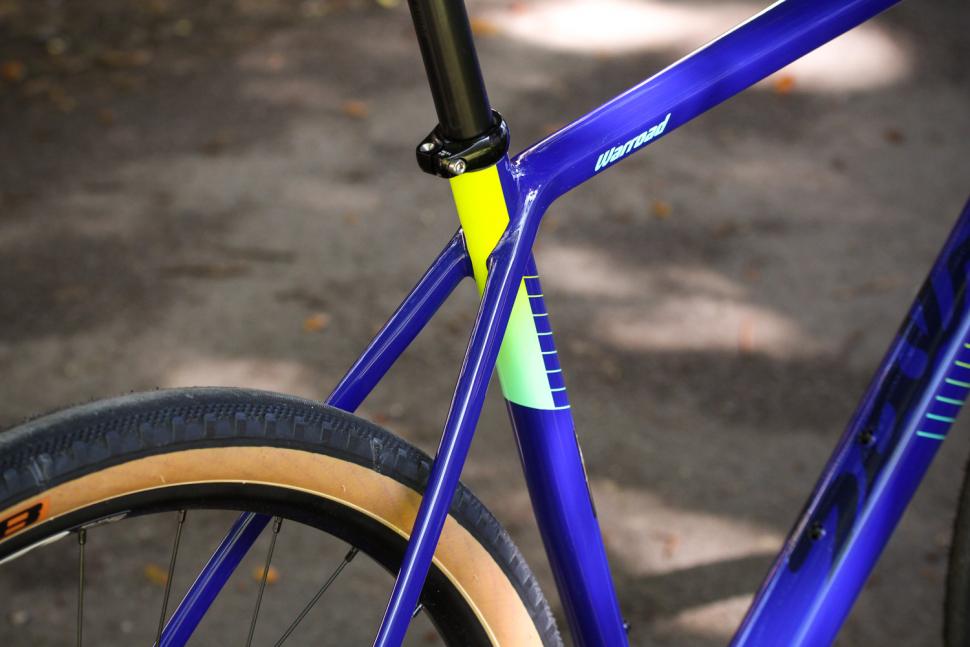
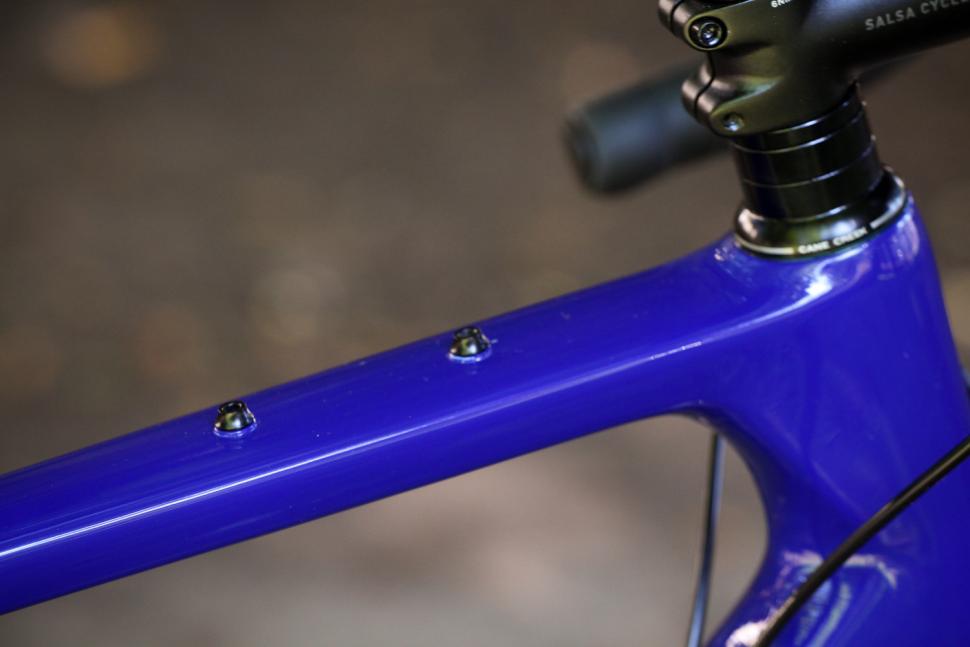


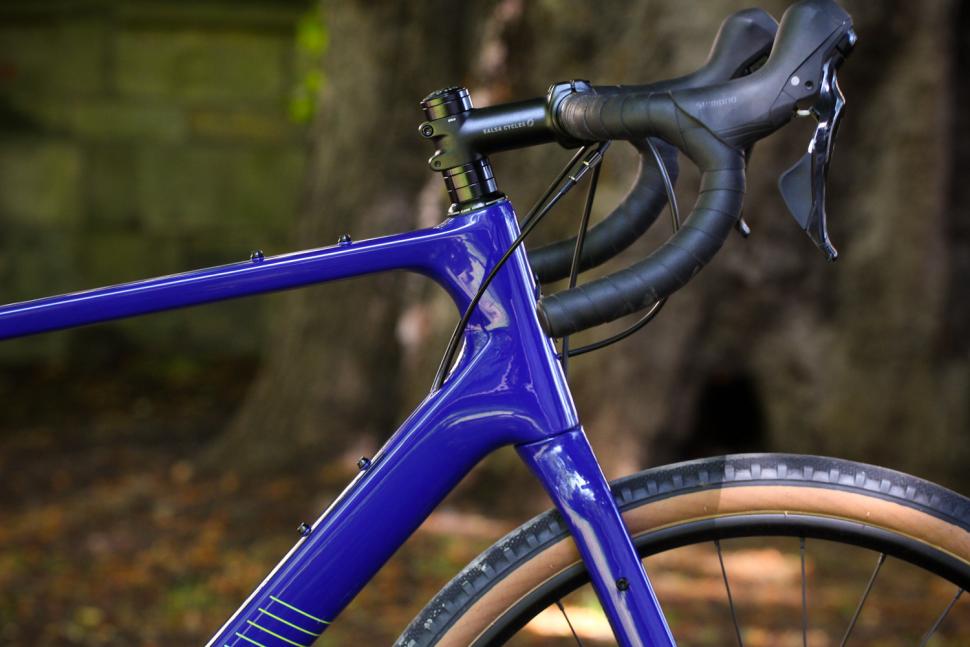










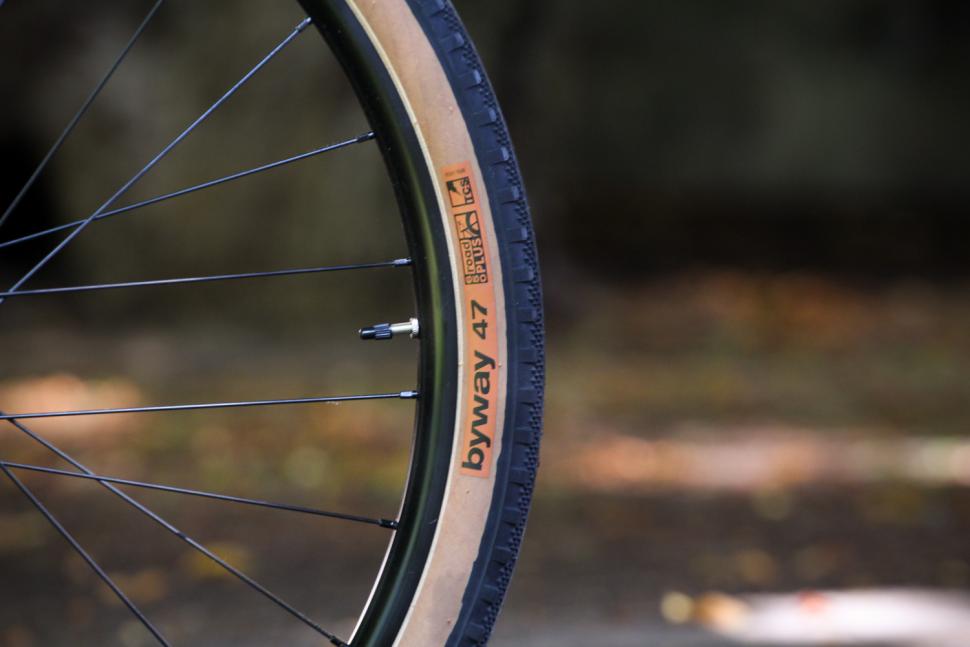


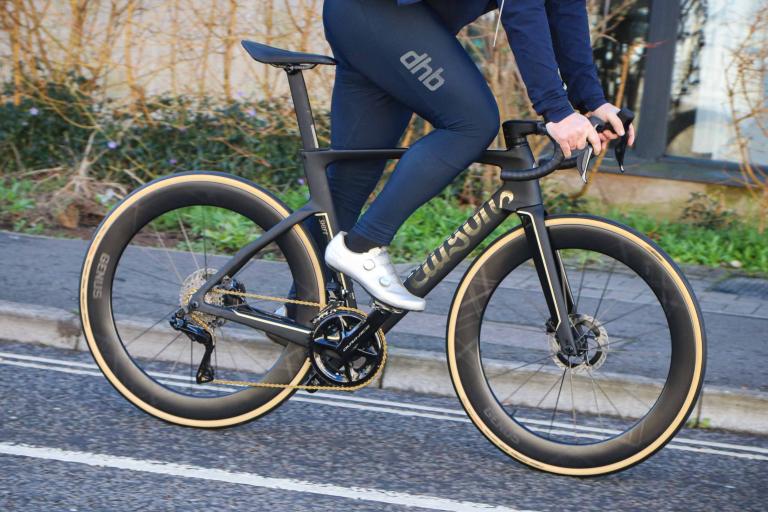
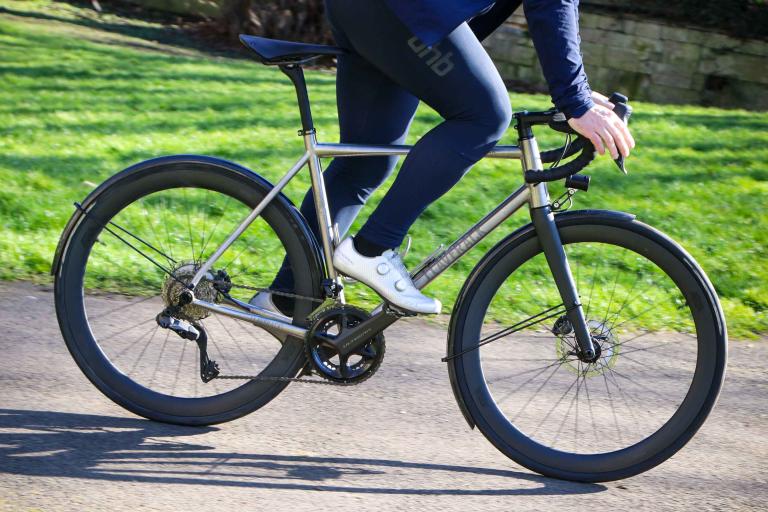


Add new comment
3 comments
Really high price for a bike that doesn't seem to have exceptional characteristics and very average equipment. I'll keep my CF Grail, better equipped, 1 kg lighter and 800 Euro cheaper.
Looks very versatile with lots of mounting points which some carbon frames seem to lack. But very overpriced. This is titanium money, or electronic groupset money.
I bought a Ribble CGR SL for about €2200, with the same groupset and Mavic Allroad wheels, mudguards and 38mm tires (that still fits with the mudguards).
Awesome bike, I use it mostly on the road as my winterbike with another wheelset and it's awesome on the road, every tube is aero-designed so it's great in the wind, it is offcourse a bit heavier than a normal roadbike but I don't mind.
On Gravel it's also good, it handles great and never let me down, the only thing I changed was the tires, they didn't come with tires that u could make tubeless (u can change it in the Bikebuilder though).
Just saying this because it's more than €1000 less and is also Carbon and 105 troughout.